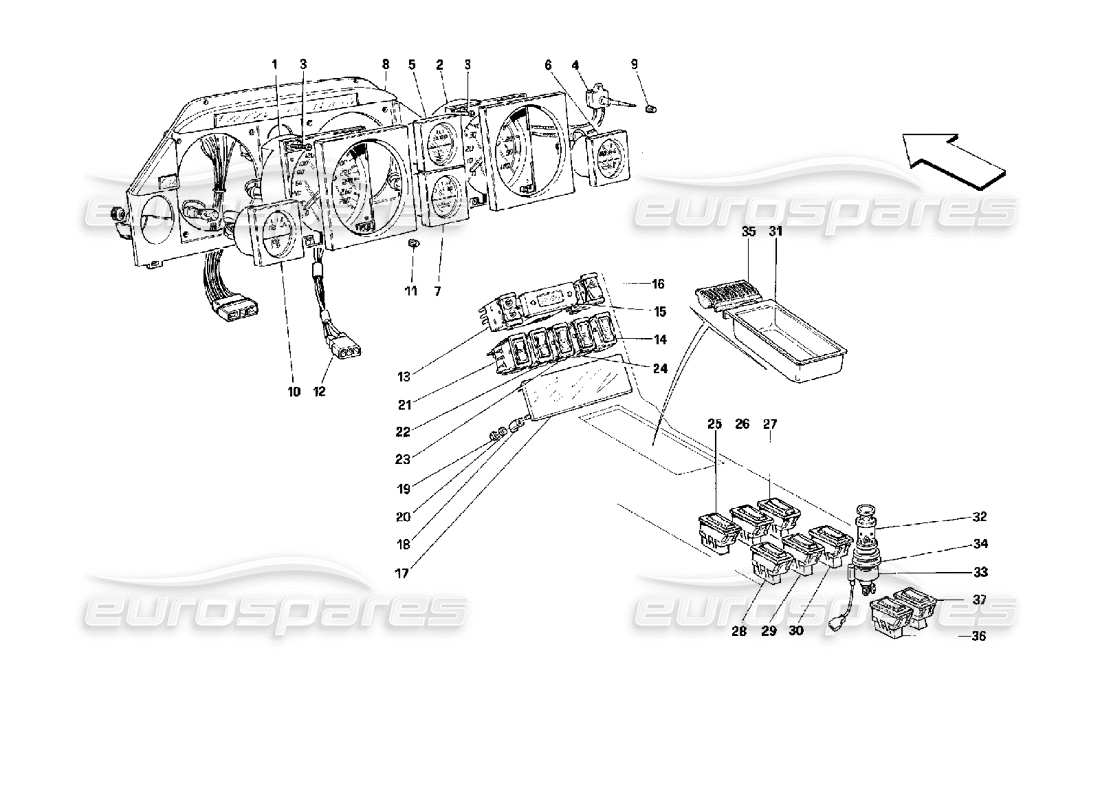The Ferrari Mondial: A V8 Legacy of Performance and Practicality
With styling by Pininfarina and bodywork by Carrozzeria Scaglietti, the Ferrari Mondial was marketed between 1980 and 1993 and at the time, was one of Ferrari’s most commercially successful models. Throughout production, the Mondial went through many updates with four variants produced as a result - the Mondial 8, Mondial QV, Mondial 3.2 and Mondial T. Excluding the Mondial 8, all other model variants were offered either as a 2+2 coupe or as a cabriolet (convertible).
Read More >>
All Mondial models were fitted with a V8 engine like the original 3.0 liter V8 powerplant released on the Ferrari Dino 308 GT4 in 1974, with the Mondial’s being the last V8, rear mid-engine, 2+2 Ferrari’s.
Starting with the production of the Mondial 8 which was launched in 1980 as the successor to the Dino 308 GT4. It was the first Ferrari production road car to be fitted with fuel injection as standard from new. The design was virtually bigger in every aspect, apart from engine size, when compared to its predecessor.
Featuring a tubular steel chassis with a bolted rear subframe section - which enabled the engine, transmission, and rear suspension to drop out of the car as a single unit for ease of maintenance - it was considered one of Ferrari’s most practical vehicles with 214 hp, a proven drivetrain, four seats and a relatively low maintenance cost.
After production of the Mondial 8 finished in 1982, the Mondial QV ("Quattrovalvole") started its succession with an introduction of a new four-valve head per cylinder design, which significantly increased power output and in turn road performance.
The design was based on the early eighties Formula 1 engine and again shared the engine with the contemporary 308 GTB/GTS. The appearance wasn’t too dissimilar to the Mondial 8 other than red engine heads and a prominent "Quattrovalvole", (4 valve in Italian), script at the rear.
In 1983 a new cabriolet convertible model was added with body styling remaining the same as the coupe variant, and the roof maintaining the “buttress” design. The only difference was that the rear seats had to be mounted closer together. The cabriolet massively increased the desirability of the Mondial, especially in the American market, as at the time, it was the only four-seater, mid rear engine, convertible sportscar manufactured in regular production.
In 1985, the new 3.2 version of the Mondial was a more powerful and flexible V8 with further improved performance and a styling refresh. The 3.2 also had a major revamp of the interior with a more ergonomic layout and more rounded instrument binnacles. The five-spoke road wheel pattern alloys changed from a flat spoke design to become a bit more rounded, and from 1987 onwards, the 3.2 also sported ABS brakes.
The final evolution of the Mondial was the Mondial T in 1989 which was visually different from preceding models. The most recognizable differences were the redesign of the air intakes, new door handles, and the front and rear bumpers became body colored.
The engine capacity increased to 3.4 liters and became longitudinally mounted alongside the transverse transmission which is indicated within the model’s name with the letter “T”. This pays homage to the first use of a transverse transmission by Ferrari in the Ferrari 312T, driven by F1 World Champion Niki Lauda. Adopting this new layout meant that the engine could be mounted lower in the chassis improving handling and performance.
-part-diagram.webp)
-part-diagram.webp)

-part-diagram.webp)